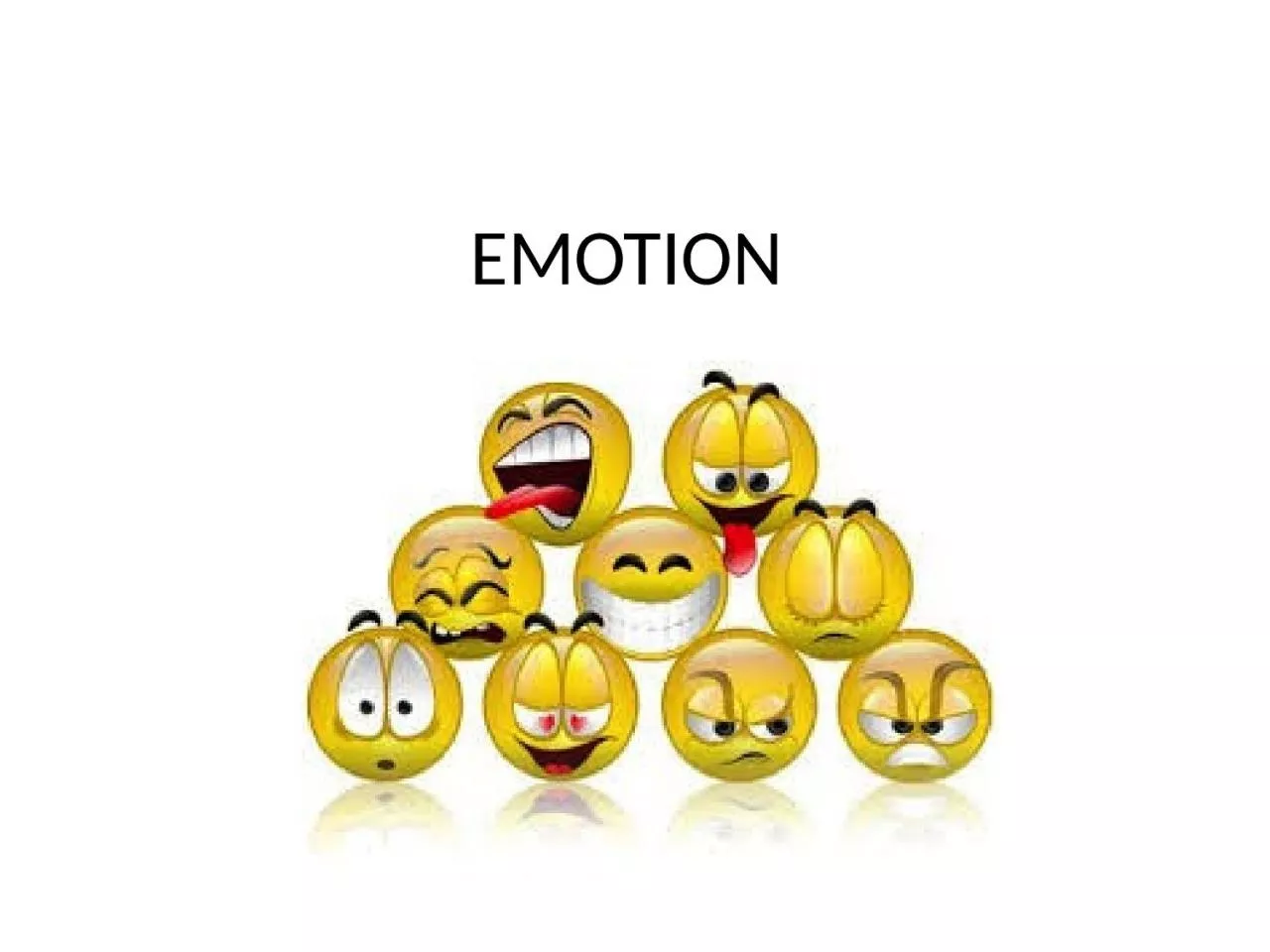

Russell et al 1989 across cultures arousal physical amp pleasantness subjective feeling Averill 1983 cognitive intervene environment amp behavioral response Lazarus 1984 cognitive before feeling ID: 932890
Download Presentation The PPT/PDF document "EMOTION What is Emotion?" is the property of its rightful owner. Permission is granted to download and print the materials on this web site for personal, non-commercial use only, and to display it on your personal computer provided you do not modify the materials and that you retain all copyright notices contained in the materials. By downloading content from our website, you accept the terms of this agreement.
Slide1
EMOTION
Slide2What is Emotion?
Russell et al (1989) across cultures: arousal (physical) & pleasantness subjective feeling
Averill (1983): cognitive intervene environment & behavioral response
Lazarus (1984) cognitive before feeling
Slide3Emosi
Yaitu
faktor
psikologis
dari keadaan perasaan seseorang. A response to a stimulus that involves physiological arousal, subjective feeling, cognitive interpretation and overt behavior Emotions are processes that are shaped by physiology, perceptions, language, and social experiences.
Slide4Emotion
emotions are basic to human beings and communication
.
They are also hard to define.
most
or all emotions are socially constructed to a substantial degree. For example, we learn when and for what to feel guilty or proud. we experience emotion holistically, not individually (we feel a cluster of emotions).
Slide5Classification of Emotions
McDougal (1921);
6 basic instinctual emotions :
Izard (1979);
10 basic emotions:
Slide6Tomkins (1981);
8 basic:
Roussel
(1990):
paired as opposites
Slide7Plutchik
Classification of Emotions (1980)
Slide8Slide9Slide10Slide11Characteristics of Emotion
Physiology of Emotion:
Sympathetic nervous system > arousal of bodily reaction
Parasympathetic nervous system > relax the body
Fear: epinephrine + norepinephrineAnger: Heart rate increase, skin temperatureThe cortex & limbic system (hypothalamus + amygdala) for survival
Slide12Slide13Slide14Slide154 components of an
emotional reaction:
Slide164 components of an
emotional reaction:
Slide174 Parts of Our Emotions
Slide18Nonverbal Reactions
External bodily changes such as:
Blushing or Perspiring
Behavioral changes such as: Facial expression
Posture
Gestures
Vocal tone Rate of Speech
Slide19Nonverbal..(2)
We can observe people’s emotions When we “read” their bodies, When listen to their voices and look at their
faces
”
With a gaze, an averted glance, or a stare we can communicate Intimacy, Submission or
Dominance
. Kleinke (1986).
Slide20Verbal expression
Word choice --
Level of wordiness show our feeling and emotions
Slide21Emotions Influence on Interpersonal Attraction
Proximity – Propinquity
(Moreland &
Zajonc
, 1982
)
Similarity in values, intellectual ability, interests & activity preferences > we like the reflection of ourselvesPhysical attractiveness > beauty = goodness & positive characteristics
Slide22Proximity – Propinquity
tendency
for individuals to form interpersonal relations with those who are close
by
people who interact and live close to each other will be more likely to develop a
relationship
human beings like things that are familiar to them
Slide23Physical attractiveness
Humans are highly visually oriented, which motivates a person to get to know someone better they find physically
attracted to
beauty = goodness & positive characteristics
Slide24Similarity
Similarity in values, intellectual ability, interests & activity preferences > we like the reflection of ourselves
Slide25Complementary of Attraction
“Opposites attract.
”
No
one is going to be exactly the same. Everyone differs in one way or another. We attract others that are opposite because we see their differences as complementary
Slide26Nonverbal Reactions
Try to smile and stay sad at the same time for 15
mins
straight its difficult to do
-Alder, Rosenfeld, & Proctor, 2007
Slide27Slide28Emotion toward
Theories of Interpersonal Relationship